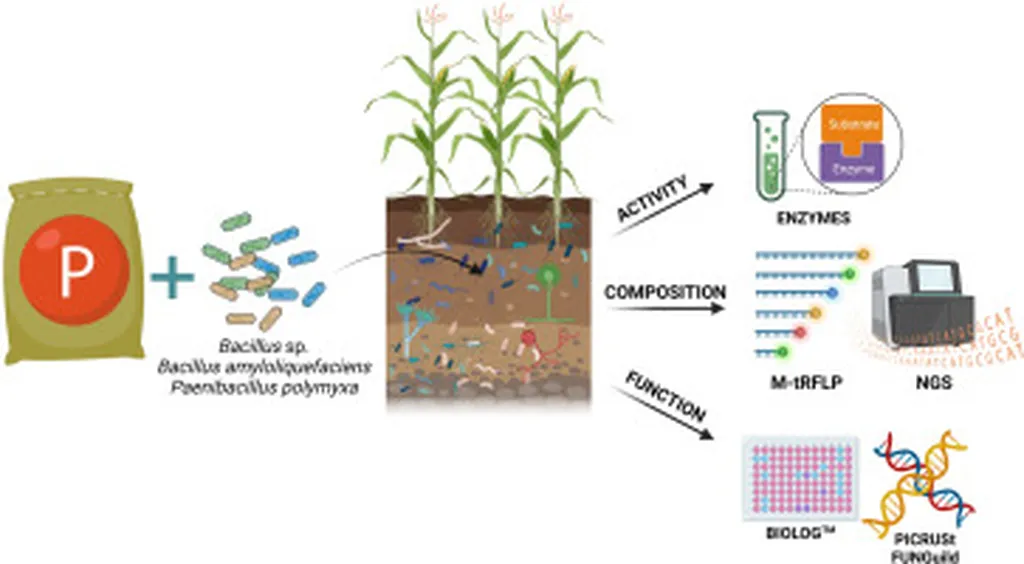In the heart of arid oasis agricultural areas, a delicate balance is being struck between reducing phosphorus use and maintaining soil health, thanks to a novel approach combining phosphorus reduction with biofertilizer application. This method, detailed in a recent study published in *Frontiers in Microbiology*, offers a promising path forward for sustainable agriculture, particularly in regions where water and nutrient resources are scarce.
The research, led by the Frontiers Production Office, explores how reducing phosphorus inputs while applying biofertilizers can enhance soil available nutrients and microbial diversity. This approach not only supports carbon-nitrogen cycling but also holds significant commercial potential for the agriculture sector. By optimizing nutrient management, farmers can reduce input costs and environmental impact while maintaining or even improving crop yields.
“Our findings suggest that biofertilizers can compensate for the reduction in phosphorus, leading to a more sustainable and efficient agricultural system,” said the lead author from the Frontiers Production Office. This balance is crucial in arid regions, where soil degradation and nutrient loss are pressing concerns.
The study highlights the importance of microbial communities in soil health. By fostering diverse microbial populations through biofertilizer application, farmers can enhance nutrient cycling and soil fertility. This approach aligns with the growing trend towards regenerative agriculture, which emphasizes soil health and ecosystem resilience.
“The integration of biofertilizers into phosphorus reduction strategies represents a significant step forward in sustainable agriculture,” added the lead author. “It offers a practical solution for farmers looking to reduce their reliance on synthetic fertilizers while maintaining productive and healthy soils.”
For the agriculture sector, the implications are substantial. As global demand for food continues to rise, the need for sustainable and efficient farming practices becomes ever more critical. This research provides a roadmap for achieving these goals, particularly in arid regions where water and nutrient resources are limited.
The study published in *Frontiers in Microbiology* underscores the potential of biofertilizers to revolutionize nutrient management in agriculture. By leveraging microbial communities, farmers can create more resilient and productive agricultural systems, paving the way for a sustainable future.
As the agriculture sector continues to evolve, the insights from this research will undoubtedly shape future developments in soil management and nutrient strategies. The integration of biofertilizers into phosphorus reduction plans offers a promising avenue for achieving sustainable and efficient agriculture, benefiting both farmers and the environment.

